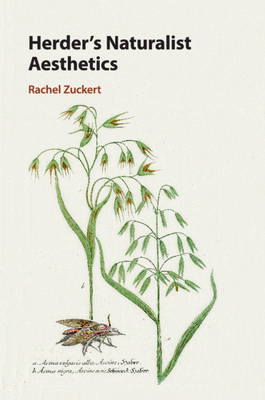
- Afhalen na 1 uur in een winkel met voorraad
- Gratis thuislevering in België vanaf € 30
- Ruim aanbod met 7 miljoen producten
- Afhalen na 1 uur in een winkel met voorraad
- Gratis thuislevering in België vanaf € 30
- Ruim aanbod met 7 miljoen producten
Zoeken
Omschrijving
In this book, Rachel Zuckert provides the first overarching account of Johann Gottfried Herder's complex aesthetic theory. She guides the reader through Herder's texts, showing how they relate to eighteenth- and nineteenth-century European philosophy of art, and focusing on two main concepts: aesthetic naturalism, the view that art is natural to and naturally valuable for human beings as organic, embodied beings, and - unusually for Herder's time - aesthetic pluralism, the view that aesthetic value takes many diverse and culturally varying forms. Zuckert argues that Herder's theory plays a pivotal role in the history of philosophical aesthetics, marking the transition from the eighteenth-century focus on aesthetic value as grounded in human nature to the nineteenth-century focus on art as socially significant and historically variable. Her study illuminates Herder's significance as an innovative thinker in aesthetics, and will interest a range of readers in philosophy of art and European thought.
Specificaties
Betrokkenen
- Auteur(s):
- Uitgeverij:
Inhoud
- Aantal bladzijden:
- 278
- Taal:
- Engels
Eigenschappen
- Productcode (EAN):
- 9781108716352
- Verschijningsdatum:
- 21/01/2021
- Uitvoering:
- Paperback
- Formaat:
- Trade paperback (VS)
- Afmetingen:
- 152 mm x 229 mm
- Gewicht:
- 376 g

Alleen bij Standaard Boekhandel
+ 121 punten op je klantenkaart van Standaard Boekhandel
Beoordelingen
We publiceren alleen reviews die voldoen aan de voorwaarden voor reviews. Bekijk onze voorwaarden voor reviews.











